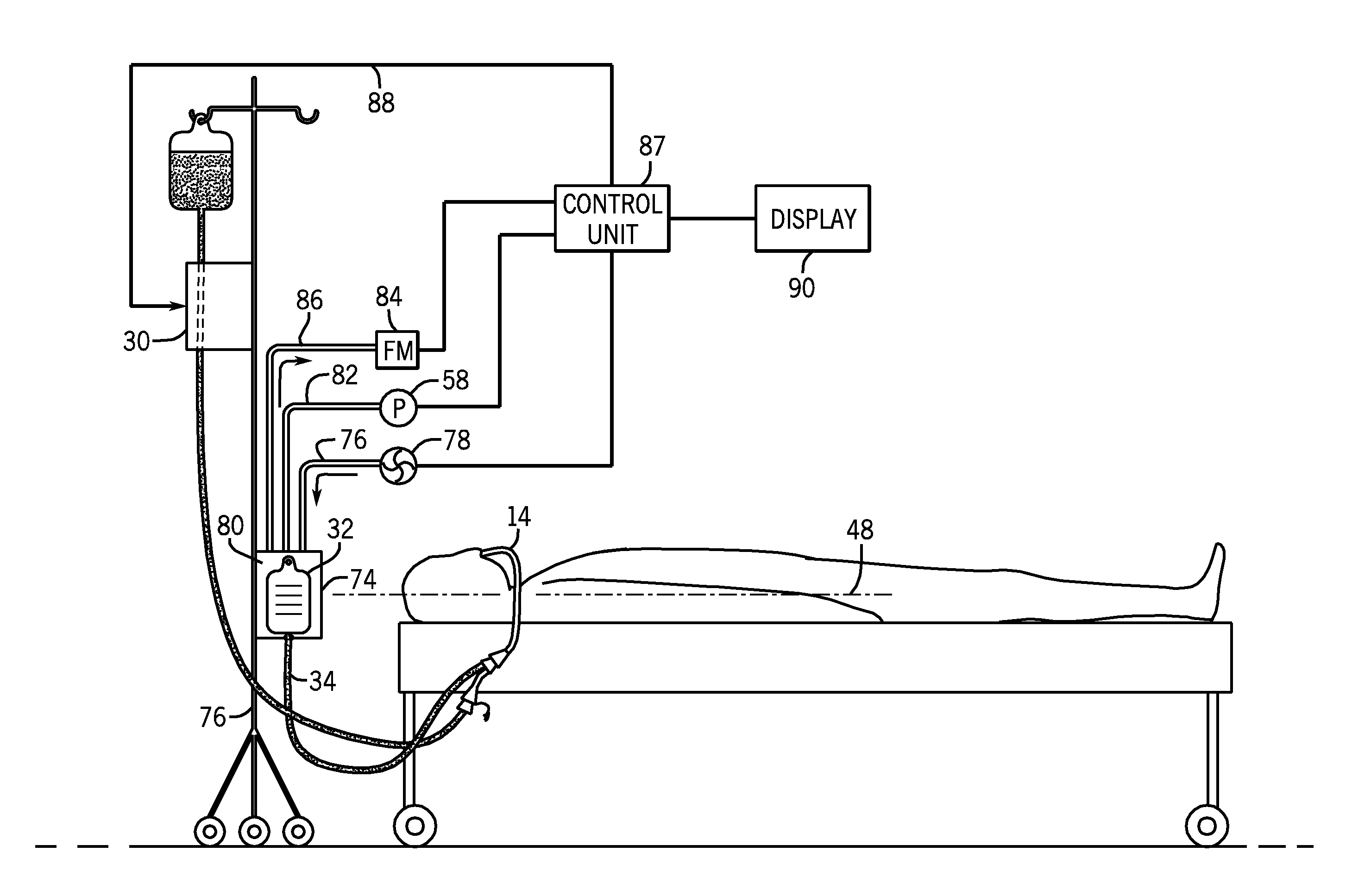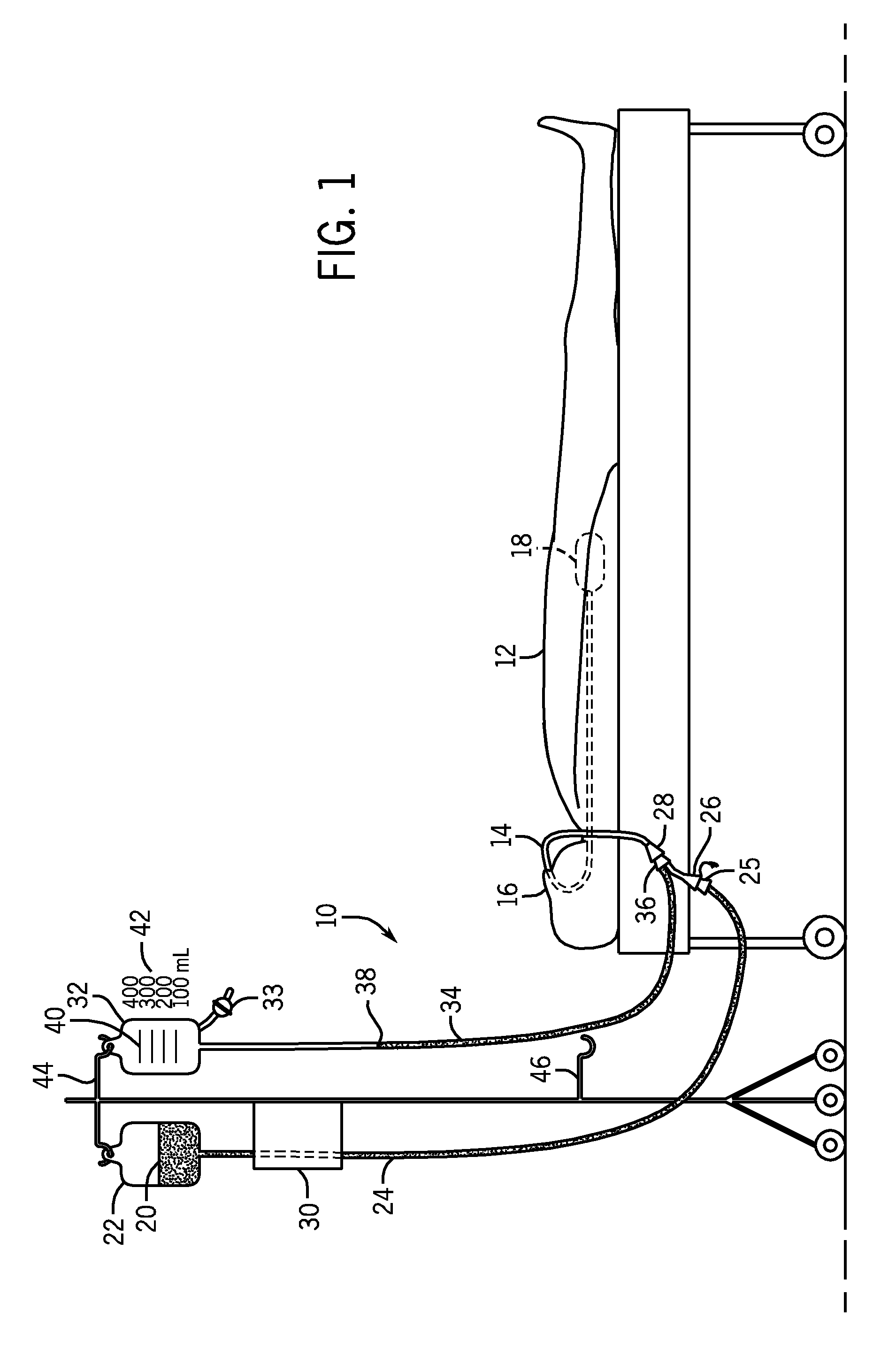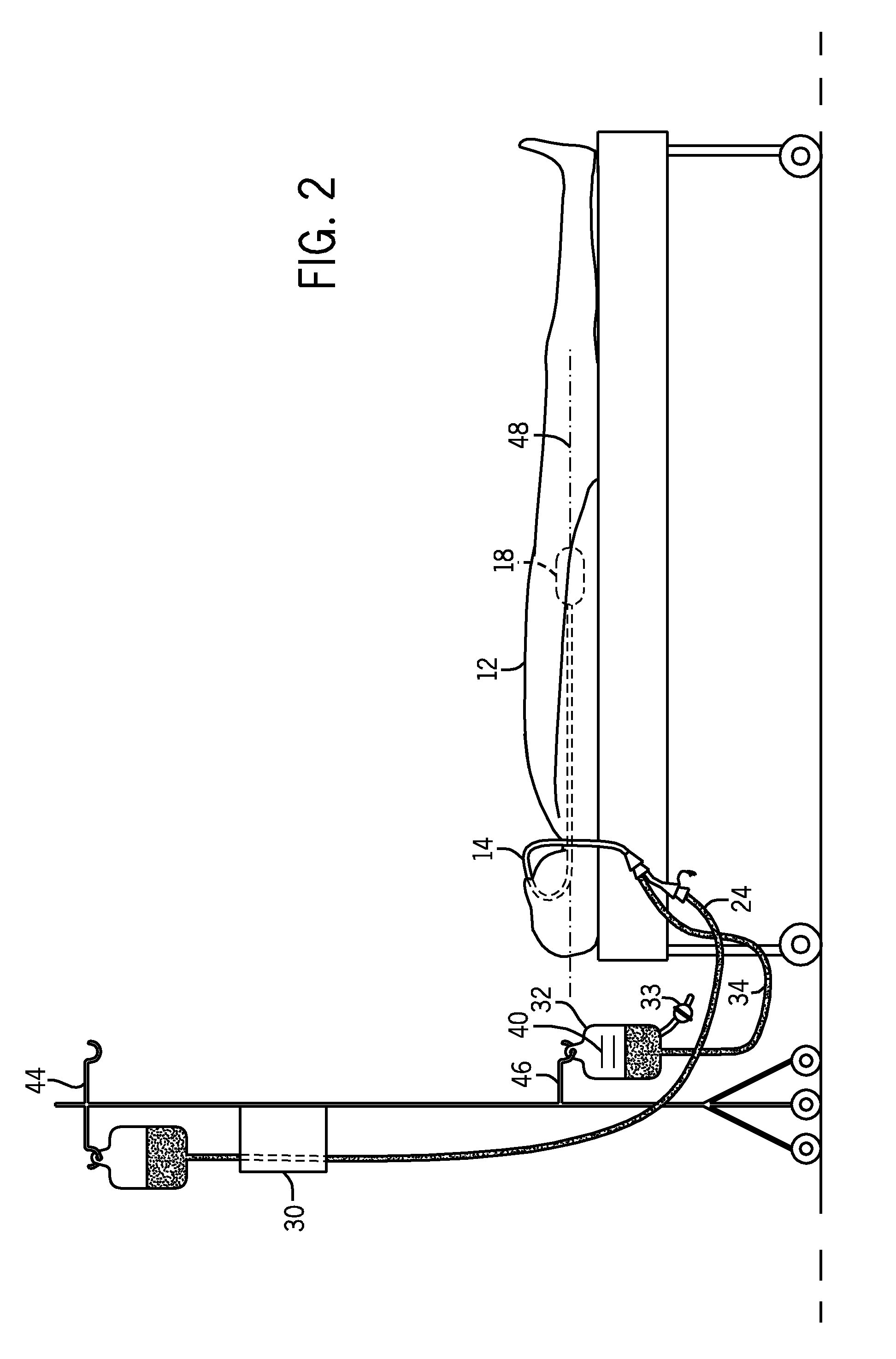Method and system for the determination of residual volume in patients having an enteral feeding tube
a technology for enteringal feeding tubes and residual volume, which is applied in the field of patient residual volume measurement methods and apparatuses, can solve the problems of inability to tolerate naso-gastric tube feeding in critically ill patients, manifestation of intolerance, and potential risk of regurgitation and aspiration pneumonia
- Summary
- Abstract
- Description
- Claims
- Application Information
AI Technical Summary
Benefits of technology
Problems solved by technology
Method used
Image
Examples
Embodiment Construction
[0021]FIG. 1 illustrates a system 10 to be used in measuring the gastric residual volume of a patient 12. As illustrated in FIG. 1, the patient 12 is in the supine position with a naso-gastric feeding tube 14 extending through the patient's nose 16 and being received within the stomach 18 or the jejunum. The naso-gastric feeding tube 14 allows a supply of liquid feed solution 20 to be fed into the patient's stomach 18 from a supply bag 22. The method and apparatus may be used for patients receiving enteral nutrition in the stomach, duodenum, or jejunum. The gastric route is most commonly used for enteral feeding and will be used in the present disclosure, to describe the invention.
[0022]In the embodiment shown in FIG. 1, the supply bag 22 is connected to a supply conduit 24 that includes a second end with a male connector 25 that is received by female connector 26. The female connector 26 is in fluid connection with male connector 36 that is received by a female connector 28 formed ...
PUM
 Login to View More
Login to View More Abstract
Description
Claims
Application Information
 Login to View More
Login to View More - R&D
- Intellectual Property
- Life Sciences
- Materials
- Tech Scout
- Unparalleled Data Quality
- Higher Quality Content
- 60% Fewer Hallucinations
Browse by: Latest US Patents, China's latest patents, Technical Efficacy Thesaurus, Application Domain, Technology Topic, Popular Technical Reports.
© 2025 PatSnap. All rights reserved.Legal|Privacy policy|Modern Slavery Act Transparency Statement|Sitemap|About US| Contact US: help@patsnap.com



